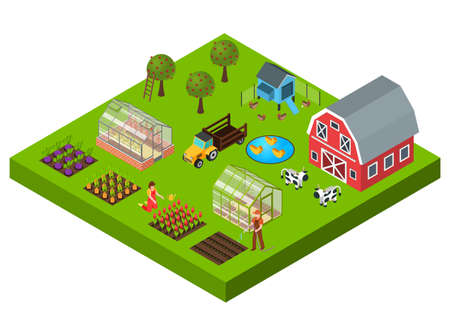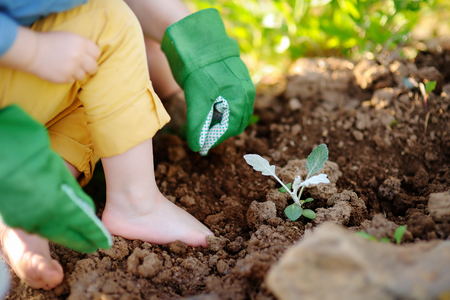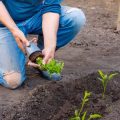1. Understanding the Importance of Native Landscaping
Native landscaping is more than just a gardening trend—its a powerful way to support your local environment and invite wildlife into your yard. By using plants that naturally grow in your region, you help create a habitat where birds, bees, butterflies, and other animals can thrive.
Why Native Plants Matter
Native plants have evolved over thousands of years to adapt to the climate, soil, and wildlife of their specific regions. This makes them incredibly valuable for local ecosystems. They provide food, shelter, and breeding grounds for native animals, especially pollinators like bees and butterflies which are essential for healthy gardens and agriculture.
Benefits of Using Native Plants
| Benefit | Description |
|---|---|
| Supports Local Wildlife | Provides food (nectar, seeds, berries) and shelter for birds, pollinators, and small mammals. |
| Conserves Water | Native plants are adapted to local rainfall patterns and typically require less watering once established. |
| Reduces Chemical Use | They are more resistant to local pests and diseases, reducing the need for pesticides or fertilizers. |
| Improves Soil Health | The deep roots of many native plants help improve soil structure and prevent erosion. |
How Native Plants Help Wildlife Thrive
Certain species depend on very specific plants for survival. For example, monarch butterflies lay their eggs only on milkweed plants. Without milkweed, monarch populations decline. Similarly, many songbirds rely on native shrubs for nesting and feeding their young with caterpillars that feed only on native trees like oaks or willows.
Examples of Wildlife-Friendly Native Plants by Region
| Region | Common Native Plants | Wildlife Supported |
|---|---|---|
| Northeast | Black-eyed Susan, Eastern Red Columbine | Bees, hummingbirds, songbirds |
| Southeast | Purple Coneflower, Coral Honeysuckle | Butterflies, hummingbirds |
| Midwest | Prairie Blazing Star, Little Bluestem | Pollinators, ground-nesting birds |
| Southwest | Desert Marigold, Arizona Cypress | Lizards, native bees |
| West Coast | California Poppy, Toyon Shrub | Moths, birds like Cedar Waxwings |
A Natural Way to Make a Difference
Choosing native landscaping isnt just good for the planet—it also turns your yard into a vibrant and lively space. Youll enjoy the beauty of blooming flowers while giving birds and pollinators a place to call home. Its an easy step toward creating a healthier environment right in your own backyard.
2. Identifying Native Plants in Your Region
Before you can attract wildlife to your yard, its important to know which native plants are best suited for your local environment. Native plants naturally grow in your region and have adapted over time to the local climate, soil, and wildlife. They require less maintenance, use less water, and provide food and shelter for birds, butterflies, bees, and other animals.
Why Choose Native Plants?
Native plants support the health of local ecosystems. Because they co-evolved with native wildlife, they offer the right kinds of nectar, seeds, berries, and habitat that native animals need to survive. Plus, they tend to be more resistant to local pests and diseases than non-native species.
Finding Out Whats Native in Your Area
The United States is made up of many different climate zones—from humid Southeast woodlands to dry Southwestern deserts. That means what works in one area may not thrive in another. Start by researching your USDA Plant Hardiness Zone to understand your regions temperature range. Then look into resources specific to your state or region.
Helpful Resources:
- Audubons Native Plant Finder
- National Wildlife Federation’s Native Plant Finder
- Local university extension programs or Master Gardener groups
- State native plant societies (like the California Native Plant Society)
Examples of Regional Native Plants
Here’s a simple guide showing examples of native plants across different U.S. regions:
| Region | Common Native Plants | Wildlife Attracted |
|---|---|---|
| Northeast | Black-eyed Susan, Eastern Red Columbine, Highbush Blueberry | Bees, Butterflies, Songbirds |
| Southeast | Coral Honeysuckle, Swamp Milkweed, Southern Magnolia | Hummingbirds, Monarchs, Frogs |
| Midwest | Purple Coneflower, Prairie Dropseed, Wild Bergamot | Pollinators, Ground-nesting Birds |
| Southwest | Desert Marigold, Ocotillo, Creosote Bush | Bees, Lizards, Hummingbirds |
| Pacific Northwest | Red Flowering Currant, Oregon Grape, Western Trillium | Mason Bees, Deer, Songbirds |
Tips for Choosing the Right Plants
- Select a mix of trees, shrubs, grasses, and flowering plants to create layers of habitat.
- Choose species that bloom at different times throughout the year to provide ongoing food sources.
- Avoid invasive species that can crowd out native plants and harm local ecosystems.
- If possible, buy plants from local nurseries that specialize in native species.
Quick Tip:
If you’re short on space or just starting out, even adding a few native potted plants on a patio or balcony can help support local pollinators!
Selecting the right native plants is the first big step toward building a yard that invites and supports wildlife all year round.

3. Creating a Wildlife-Friendly Habitat
Designing your yard to support local wildlife is easier than you might think. With the right combination of native plants, shelter options, and water sources, your landscape can become a thriving habitat for birds, butterflies, bees, and other beneficial creatures.
Provide Food Through Native Plants
Native plants are the cornerstone of any wildlife-friendly garden. They produce the seeds, berries, nectar, and foliage that local animals depend on throughout the year. Choose a variety of plants that bloom at different times to ensure a steady food supply.
Examples of Native Plants by Region
| Region | Native Plants |
|---|---|
| Northeast | Black-eyed Susan, Eastern Red Columbine, Wild Bergamot |
| Southeast | Coral Honeysuckle, Purple Coneflower, Butterfly Milkweed |
| Midwest | Purple Prairie Clover, Little Bluestem, Joe-Pye Weed |
| Southwest | Desert Marigold, Penstemon, Texas Sage |
| West Coast | California Poppy, Toyon, Yarrow |
Add Shelter Options
Wildlife need places to hide from predators, raise young, and escape extreme weather. You can offer shelter in several simple ways:
- Birdhouses: Provide nesting spots for species like chickadees or wrens.
- Brush piles: Stack twigs and branches in a quiet corner for rabbits and ground birds.
- Dense shrubs: Offer safe resting areas for small mammals and birds.
- Trees: Mature trees are essential for many birds and squirrels.
Create a Water Source
All animals need water for drinking and bathing. Even if you don’t have a pond or stream on your property, there are easy ways to help:
- Birdbaths: Keep them clean and shallow with fresh water.
- Dishes or saucers: Place them on the ground for butterflies or small mammals.
- Mud puddles: Butterflies use moist soil for minerals—just keep a patch damp in summer months.
Incorporate a Pollinator Garden
A pollinator garden filled with native flowering plants attracts bees, butterflies, and hummingbirds. Group similar plants together to make it easier for pollinators to find them. Avoid pesticides and choose single-bloom flowers over double blooms for better access to nectar.
Pollinator Favorites by Season
| Season | Recommended Plants |
|---|---|
| Spring | Golden Alexanders, Wild Geraniums, Lupines |
| Summer | Echinacea (Coneflower), Milkweed, Bee Balm |
| Fall | Asters, Goldenrod, Sunflowers |
A well-designed wildlife-friendly habitat not only helps support local ecosystems but also adds life and beauty to your outdoor space. By focusing on native landscaping elements like food sources, shelter structures, and water features, you’ll create a welcoming environment for a wide range of wild visitors all year long.
4. Maintaining a Sustainable Landscape
Creating a native landscape that attracts wildlife is just the first step—keeping it sustainable and healthy throughout the year is equally important. A well-maintained yard provides consistent food, shelter, and water for birds, butterflies, and other local wildlife. Here’s how you can care for your space using eco-friendly practices.
Organic Lawn Care Basics
Choosing organic methods to care for your lawn helps protect wildlife and supports healthy soil life. Instead of synthetic fertilizers and pesticides, use compost and natural amendments to boost soil fertility. Mow high (around 3 inches) to promote deep root growth and reduce weeds naturally.
Benefits of Organic Lawn Care
| Practice | Wildlife Benefit |
|---|---|
| Compost instead of chemical fertilizer | Supports pollinators and soil organisms |
| Mowing less frequently | Provides habitat for insects and ground-nesting birds |
| Leaving grass clippings on lawn | Adds nutrients back into the soil naturally |
Limit Chemical Use
Pesticides, herbicides, and fungicides can be harmful to beneficial insects, birds, and amphibians. Try integrated pest management (IPM), which focuses on prevention and natural solutions first. For example, introduce ladybugs to control aphids or use neem oil as an organic treatment.
Tips to Reduce Chemical Dependency:
- Hand-pull weeds instead of spraying chemicals
- Encourage natural predators like birds or frogs to control pests
- Avoid using any chemicals near birdbaths or feeders
Seasonal Maintenance for Year-Round Habitat
Your landscape should evolve with the seasons to continuously support local wildlife. Each season brings different needs—for example, winter shelter, spring nesting areas, summer water sources, and fall food supplies like berries or seeds.
Seasonal Wildlife-Friendly Tasks
| Season | Maintenance Task | Wildlife Support |
|---|---|---|
| Spring | Leave leaf litter until temperatures rise consistently above 50°F | Protects overwintering insects and eggs |
| Summer | Provide shallow water sources; mulch plants to retain moisture | Keeps pollinators hydrated; protects roots from heat stress |
| Fall | Plant native shrubs with berries; avoid heavy pruning | Offers food and cover for migrating birds and small mammals |
| Winter | Leave seed heads standing; create brush piles with fallen branches | Nourishes birds; offers shelter from cold weather |
Sustainable landscaping isn’t about perfection—it’s about balance. By embracing natural processes and adjusting your care routine with the seasons, youll create a thriving environment that supports wildlife while keeping your outdoor space beautiful all year long.
5. Inspiring Community and Backyard Conservation
Creating a native landscape in your yard not only benefits local wildlife—it can also inspire your neighbors and community to do the same. By getting involved in local conservation efforts, registering your garden as a certified wildlife habitat, and sharing your experience, you can help grow a network of environmentally friendly yards across your neighborhood.
Connect with Local Conservation Groups
Start by reaching out to local conservation organizations, nature centers, or native plant societies. These groups often host workshops, volunteer events, and plant sales that support native landscaping and wildlife preservation. Joining these communities gives you access to expert advice and like-minded people who care about nature just like you do.
Where to Look:
| Organization Type | Examples |
|---|---|
| Native Plant Societies | California Native Plant Society, Florida Native Plant Society |
| Wildlife Conservation Groups | National Wildlife Federation (NWF), Audubon Society |
| Local Nature Centers | Your city or countys parks and rec department |
Register Your Yard as a Wildlife Habitat
You can officially certify your garden through programs like the National Wildlife Federation’s Certified Wildlife Habitat®. All you need is to provide food, water, cover, and places for wildlife to raise their young—all of which native plants naturally support. Once certified, you’ll receive a sign to proudly display in your yard, letting others know youre helping protect nature at home.
Basic Requirements for Certification:
| Requirement | Description |
|---|---|
| Food Sources | Berries, nectar plants, nuts, or feeders |
| Water Sources | Birdbaths, ponds, or small fountains |
| Shelter | Dense shrubs, brush piles, or logs |
| Nesting Areas | Trees, nesting boxes, groundcover areas |
Encourage Others to Join In
You dont have to do it alone—invite friends and neighbors over to see your garden and talk about the benefits of native landscaping. You can even organize a neighborhood planting day or start a community garden with native species. Sharing photos on social media with tips about what works in your area is another great way to spread the word.
Simple Ways to Inspire Others:
- Create a small flyer about native plants and share it locally.
- Add signage to highlight wildlife-friendly features in your yard.
- Sponsor a native plant swap with neighbors.
The more people see how beautiful and beneficial native landscaping can be, the more likely they are to give it a try themselves.


